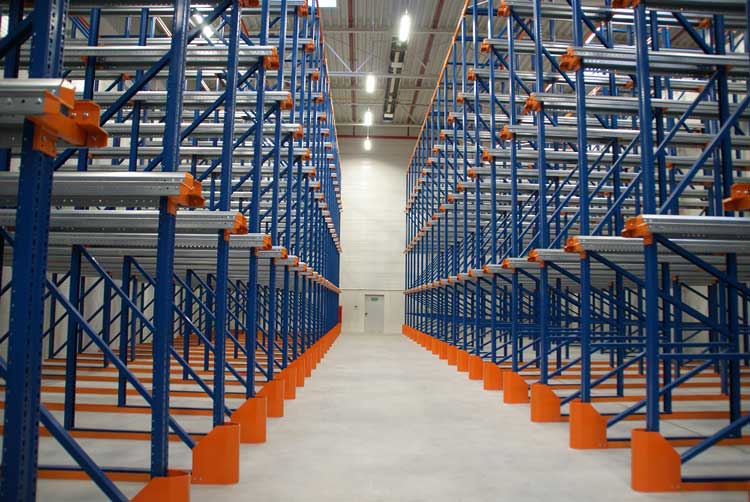Drive in rack systems, also known as drive through rack systems. The through rack can be used for a forklift (or unmanned Cart with a fork) to drive into the channel to access goods. It is suitable for the storage of goods with few varieties and large quantities.
The drive in rack systems are widely used for storing large quantities and small varieties of goods, with unified packaging and single products, such as food, tobacco, cold storage, and other warehouses. The drive in rack systems allow forklifts to drive into the storage racks for product storage, thereby reducing the space required for forklift access and storing more products within a limited warehouse, effectively improving the utilization of warehouse space.
Structural composition of the drive in rack system
The drive in rack systems usually adopts a rack structure where columns are continuously connected to multiple doors, and palletized goods are stored one by one on cantilever beams along the depth direction. The biggest feature of this rack structure is that it can maximize the utilization of space in the warehouse, greatly improving the utilization rate of warehouse space. However, goods within the same operation channel cannot be stored in a first in, first out manner, and are suitable for storing goods in large quantities, with a small variety, or within the operation channel flowing together to the same customer.
Advantages and characteristics of drive in rack systems
1. The cargo storage channel is also a forklift storage and transportation channel, which is a form of rack with high storage density.
2. Usually used for storage of goods with a small variety but large batch size, and low requirements for picking goods.
3. Based on the conventional plan of lifting the height of a regular forklift and having three layers of goods on the drive in rack systems, the effective storage capacity of the warehouse can be increased by more than 100%. In contrast, the investment cost is controlled and the benefits are significantly improved. From the perspective of global storage costs, the increased storage capacity benefits can generally offset investment costs within three years.
4. The goods follow the principle of first in, second out, and are suitable for most handling machinery storage and transportation operations.
Post time: Jul-03-2023

